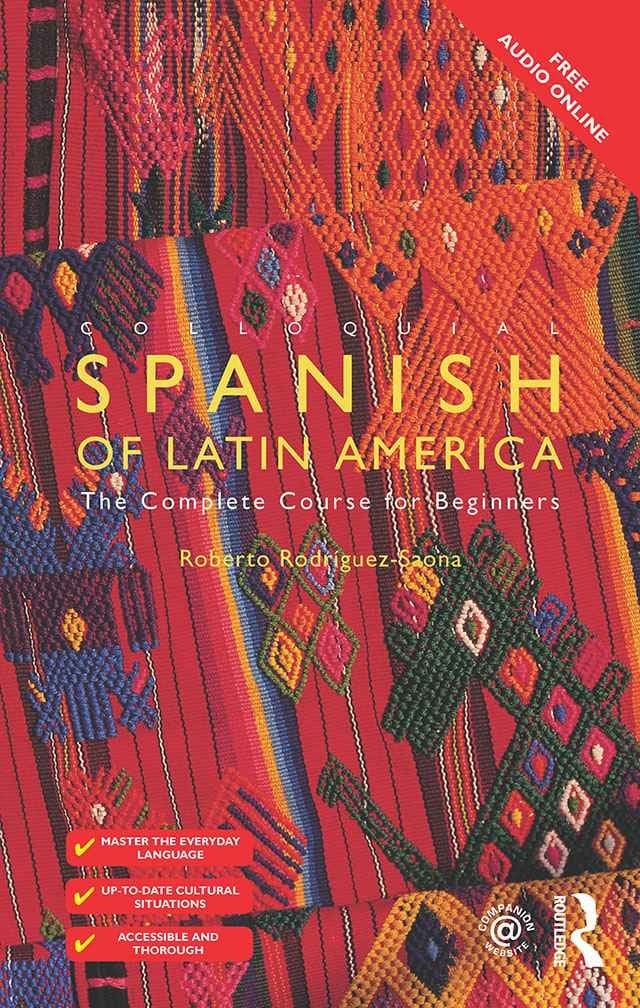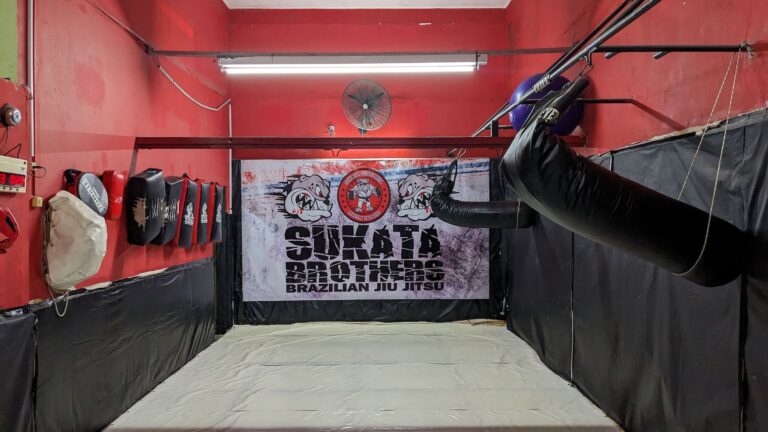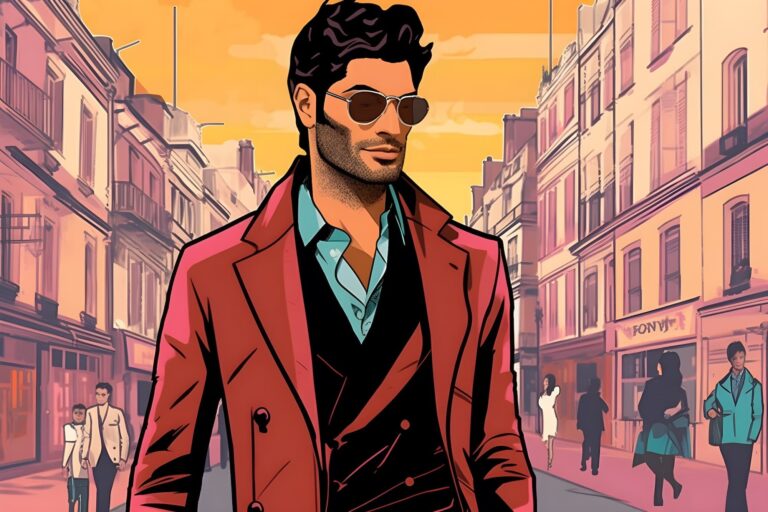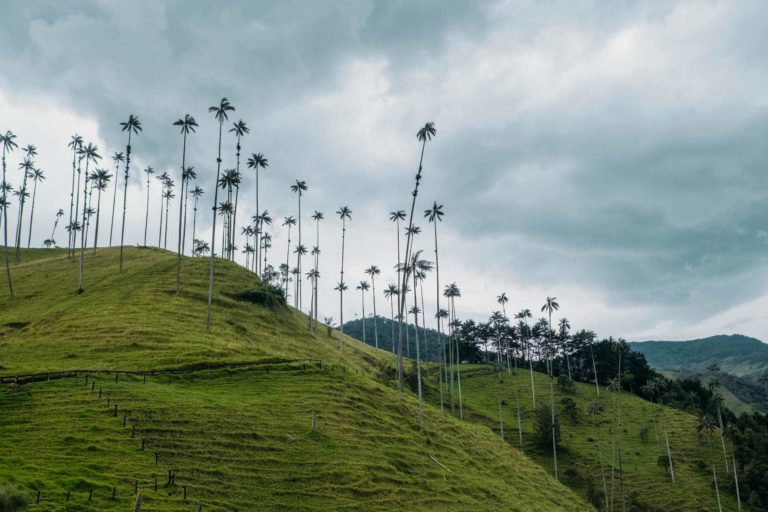Living in Colombia — A Complete Guide for Nomads
This is our guide to living in Colombia for anyone who wants to stay in Colombia for a few weeks or more to immerse themselves more in the culture, whether learning Spanish, to dance, to buy coffee, or to just live the good life.
We stayed in Colombia for a few months, spending on average a few weeks in each city — mostly Cali, Medellin, and Bogotá.
Before moving to Colombia we only had a vague idea of what to expect. It’s just kind of hard to research what it’s like staying in a place for a while. (Other than knowing that others like it!)
We tend to live fairly “normal” lives — we live modestly, don’t party all the time, and have work to do during the day aside from language and dance classes.
But we learned a few things that would help other writers, digital nomads, or just culture-seekers settle down in Colombia for a few weeks or more. Here they are.
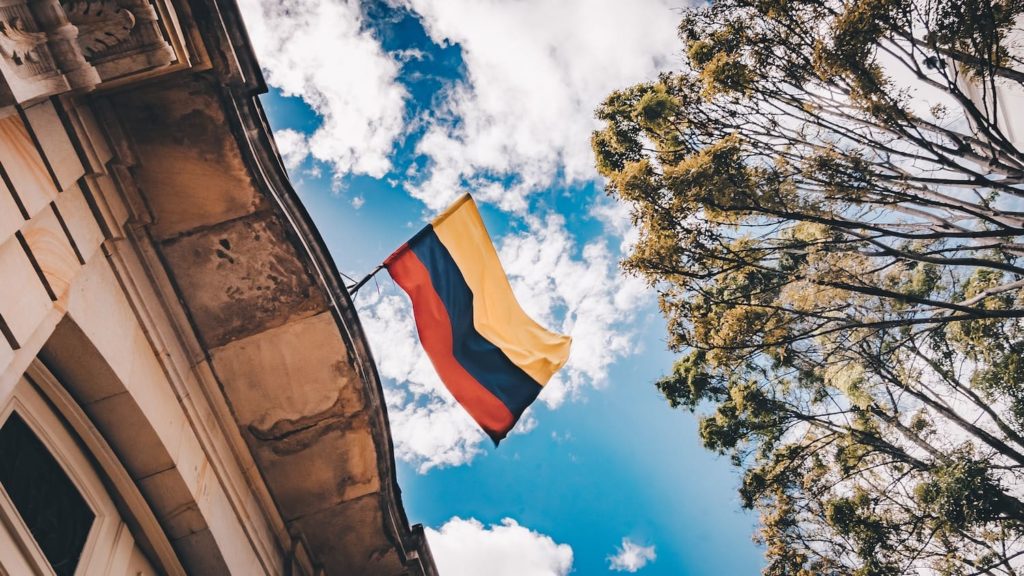
This is the latest in our guides to living in a place for a few months. We’ve previously written about living in Egypt, Tel Aviv, and Taiwan — to name just a few!
Contents
Visas for Colombia
Most countries get a visa on arrival with literally zero questions for three months. If you want to stay longer than three months, you need a visa, and then a residence card, a cédula de extranjeria.
In theory, you need an exit flight from Colombia (within the 3-month stay) to board your flight and to be admitted. But neither the airline we boarded (Delta, in Los Angeles, USA) nor the immigration officers in Colombia asked about an exit flight, let alone asked for evidence of the ticket we had bought.
Nonetheless, a common option is to buy a flight from an airline that has 24-hours no-questions-asked cancellation. It’s easier to do this via Expedia or a similar service.
Internet and Data SIM cards in Colombia
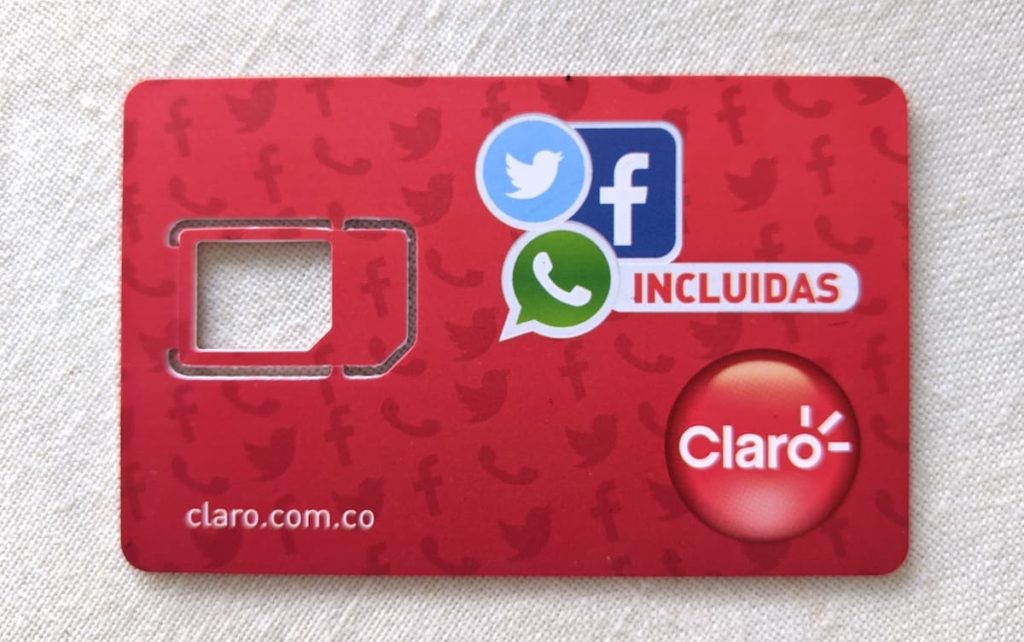
In a nutshell: Get a pre-paid Claro sim card from an official store. They have the best coverage.
As a foreigner without a cédula (a local ID card), you can get prepaid only. The deals aren’t that great and it will cost 43,000 (including sim card price) for one month 2gb, which is about US$13.
You can only pay cash for pre-paid — no credit cards, no debit cards (and this is in official stores).
Yes, this is pretty expensive. If you have Google Fi like we do, you only are saving a little, since Google Fi is $10/GB worldwide.
You get slightly better deals with the other networks, but poorer coverage nation-wide.
You can recharge your SIM card at official stores plus corner stores.
Internet speed in Cali: The Airbnbs we stayed in had good internet. One had 20Mb/s down, 10 MB/s up, which is better than we get in Australia (an internet backwater), but not as fast as we get in the US or Asia. Another one was LTE-based, and had 7Mb/s down, 3Mb/s up.
Internet speeds were fine for working online, but wouldn’t be enough if you’re a video producer or something very high-bandwidth.
On the other hand, the internet connection in the places we stayed would regularly stop, for periods of 15 minutes to a few hours, if there was an internet outage, a power outage, or if a modem failed (the latter happened once).
Colombian Society
Like many developing countries, Colombia has a large wealth-poverty gap (common to nearly every country to different degrees), issues with refugees and immigration (over 1M many Venezuelans have entered the country in the last couple of years alone), racism (again, everywhere), and political instability and corruption.
On top of those problems, Colombia is still recovering from a guerilla war with the FARC, as well as a history of drug trade/wars (and those two things were sometimes inter-related but only incidentally).
Two-thirds of Colombians are either in poverty or at risk of poverty, with a quarter of the population earning less than 250,000 pesos (about US$70) a month.
For context, 250,000 pesos does NOT get you far in a medium-sized city. Even though we live modestly, we’re so far removed from it that I actually have no idea how one could live on that, even if I lived as frugally as possible.
Refugees have put extra pressure on Colombian society, largely people from neighbouring countries in political turmoil — mostly Venezuela as a result of the ongoing political crisis that has displaced more than 4 million Venezuelans. Colombia has been a source of refugees in the past two, many of whom fled conflict zones for Ecuador.
The result of all the above is living in Colombia means you’ll see money, and you’ll se poverty. There are very fancy parts of all Colombian cities with lots of old money, and also rough parts that are high in crime, as well as slums/shanty-towns. Know your areas and don’t stay out late if you don’t.
Language in Colombia: Spanish, unsurprisingly
People in Colombia speak Spanish. If you don’t know Spanish, I highly recommend learning phrases including
- Greetings and pleasantries (Hola, como están, etc.)
- Numbers and counting, so you can buy things. You’ll need to be proficient at counting in hundreds and thousands to count pesos.
- Ordering food, and knowing common ingredients, plus what to buy in markets
That sounds like a lot, but it’s really just the first few chapters of a decent Spanish book… but practised over and over!
You can check out our 80-20 guide to learning languages. We’re putting together a language resource page for Spanish, but it’ll be nothing revolutionary. Want to learn Spanish? Pick up a book like Colloquial Spanish!
We’re big fans of learning languages from books with audio, and our favourite one is Colloquial Spanish of Latin America.
It’s around $45 for the Kindle version, and you can get the audio online from Routledge.
In fact, if you’re unsure, go listen to some of the audio first (just google it and you’ll find it… the link sometimes changes) and see if you like the style.
Levels of English vary a lot by how touristy a place is, and how educated a place might be. In central Bogota and Medellin, people speak English. But in Cali and anywhere suburban, English levels drop significantly.
Luckily, Colombian Spanish is really easy to understand, compared to Chilean Spanish, or Iranian Spanish, which I will do for you on request if we ever meet in person.
A few bits of essential Colombian Spanish slang are
- ¡Quiubo! — What’s up, how’s it going? Contraction of Que hubo? or literally “What was there?”
- Chévere — means kind of “awesome”. ¡Ese lugar es muy chévere!
- Bacán — means “cool”. Me gusta mucho esa discoteca, es muy bacana.
- ¡Hágale pues! — OK! Fine! Go ahead! Let’s do it Literally “Do it to him/her” I guess.
- Rumba and rumbear — a party, or to party. ¡En Cali se rumbea mucho!
- Con (mucho) gusto — say this when someone says Gracias to you. Nobody appears to say No hay de que or De nada. (Could be our experience, and these things change over time)
See our more complete guide to Colombian slang here.
What people do in Colombia
There are lots of things people do while living in Colombia, but here are the main ones.
Hiking: Colombia has lots of mountains. You can get a tour group to take you out for very little, like less than 100,000 COP per day.
You can visit the coffee zone (la zona cafetera) and visit plantations there too, which usually involves a bit of a hike by default.
We wrote a guide to hiking the Valle de Cocora which you might find useful.
Dancing: Living in Colombia means rumba — partying!
Colombia is one of the homes of dancing and salsa. There are many salsa schools around and many salsa clubs — particularly in Cali. Other dance styles common in Colombia are bachata and merengue.
Here’s our guide to the best Cali salsa dance clubs, including our personal favourites!
We’d highly recommend getting some salsa dance lessons at Sondeluz, our favourite school, plus the oldest salsa dance school in Cali. An alternative is Sabor Manicero, which also has great teachers at slightly better rates, but it’s just a smaller school (one big studio only) and has less hour availability.
In Medellín, we’d recommend getting a salsa teacher to come to your house via the website Salsa Classes Medellin, which is a marketplace that makes sure teachers get paid a lot better.

Then head out to some of the really popular dance clubs. In Cali, the most popular one is La Topa Tolondra. In Medellín, it’s Dancefree.
In both, you’ll get a decent mix of locals and foreigners, but you can tell who the foreigners are (they usually can’t dance as well… or at all).
Getting out of town: There are lots of smaller towns around Colombia that each have their own character. One of these is Salento — a great place to spend a few days or more.
Money, Cash and Credit Cards in Colombia
The Colombian Peso (COP) is counted almost always in hundreds and thousands. I never received change in a form of less than 50 (and that was rare) — it was usually a hundred pesos (about US 3c).
So typical prices are often things like 500 (quinientos), 4,700 (cuatro mil setecientos), 12,000 (doce mil), etc.
Firstly, get cash. It makes life easier.
Be aware that there are two kinds of most small notes and coins. Even the coins often have different sizes! It’s super annoying for counting change quickly to make sure you weren’t short-changed.
Change money at
- Websites like Xoom (owned by PayPal) let you make payments or retrieve money at a lower rate than a normal ATM transaction rate.
- Bancolombia lets you withdraw 600,000 (about US$200) at once, so became our preferred ATM — others only allowed 300,000. With ATM fees, that becomes a much worse deal.
- Money change places in safe places like malls, or if you’re game, using a money changing app!
You can use credit cards at lots of places like supermarkets and chain eateries. If you do, remember
- They will ask you for a “cédula”, an id card. This is standard practise when using a credit card. I just always say “no tengo” and they’re fine with that. An international driver’s license will work too.
- They will ask you “Cuantas cuotas?” which means “In how many periods do you want to pay off the credit card debt?” The answer is one. (I doubt any other answer would work with foreign credit cards?
- Some places (the minority) may apply a 3-5% fee. You can negotiate it down for large payments.
Nonetheless, I’ve even found my dentist preferred cash, and that was a fancy dentist!
Medical/health things in Colombia
Taking care of your health is important living in Colombia. Somehow I seem to end up in a doctor and dentist in nearly every country I visit (as we tend to go for a few months at a time).
Doctors: Luckily, doctors and hospitals are easy to find and cheap. A doctor visit costs 30-60,000 COP, or less than $20.
If you don’t speak Spanish and want a doctor that advertises they’re fluent in English on a fancy website, that price will roughly double to over 100,000 COP. But doctors are smart, and local doctors will usually know enough English to treat you. Just go to Google Maps and type “médico” and see what you find.
Dentists: Dental care in Colombia is cheap. That’s why people come to Colombia for medical/dental tourism. General costs are
- Clean: $40-70, depending on the fanciness level of the dental clinic.
- Root canal: $200-250 (unfortunately I needed one of these!)
- Crown: $200-250
Other things like porcelains etc. cost less than 1/4 what they cost in the USA.
When buying pharmaceuticals (like, medicine… what were you thinking), make sure you ask for the generic version. In many Western countries, a pharmacist proactively offers the generic one. Not so in Colombia — they’ll try to sell you the branded one or an alternative branded one.
Remember though, in case of emergencies, health insurance can save your bacon. I’ve used World Nomads for years — mostly because when I make claims, they actually pay out.
Getting around Colombian cities
Getting around cities is part of everyday life living in Colombia. How you get around depends on the city you’re in.
- Cali and Cartagena have good informal private bus networks. You pay on entry, and the tariff is under 2000 COP (under $1). It’s a little complicated to use if you don’t speak Spanish and aren’t sticking around for a while, but they’re as local as they come!
- Medellin has a good metro network. Make sure the place you’re staying isn’t too far from a metro station. It’s not like the biggest cities in the world, so a 10-minute walk to the metro station is considered close.
- Every city has many cabs. People use meters in taxis, and you don’t even have to ask them. It’s typical to round up a fare for a driver slightly just as a tip.
Cabs in Colombia are cheap. Generally we spent a minimum of 3,000 for a 5-10 minute ride (which we’d do if it were late at night or in a sketchy area), and never more than 12,000 COP even for a 30-minute ride.
For transport/ride-sharing apps: Uber stopped working while we were in Colombia, leaving two options: Didi and Cabify.
Of the two, Didi had lower ETAs. Both had general fairly typical customer service, where you’re occasionally overcharged and have to complain. In one case with Cabify, I was under-charged due to a “technical error” and they added a huge amount to my bill. I was furious — businesses should take responsibility for their mistakes if they’ve misled a customer — and so I only recommend Didi.
Nonetheless, both Didi and Cabify present the same old “Uber 5 years ago” picture of promising a 1 minute ETA but in reality, it being 5-10 minutes, and then sometimes never even getting a connection.
Getting from the airport in Colombia
Getting from the airport varies by city but can cost up to 60-80,000 COP (about US$20). This is largely due to the Airport pick-up fee that they charge drivers, and the airports being out of town in smaller cities.
Cali: Standard taxi fee is 60-70,000 depending on the destination.
Medellin: Standard taxi fee is 80,000 to the center of town. You can get a colectivo for 20,000 per head to reduce the cost, or even get a bus for 10,000 a head. From the destination of the colectivo or bus, you get another taxi.
Bogota: Taxis in Bogotá from the airport are cheaper — 20-30,000 COP (roughly US$10-15).
Eating and Drinking in Colombia
Typical food in Colombia: Breakfast and lunch are often set things you can get in many corner store restaurants.
Breakfast: This varies a lot by region!
In Cali, we saw a combination of things like pandebono (a round cheese bread, a bit like a Brazilian pão de queijo), pandeyuca (cassava bread), plus of course coffee, a fried egg, and sometimes a “leftover special” of beans, rice, and last night’s dinner called “calentao” (“reheated”, roughly).
In Medellin, the calentao was a popular option. But the real star of the show is the bandeja paisa, a spicy and very filling combination of rice, beans, chicharrón, meat of some kind, fried banana, arepa, and avocado.
Generally, just ask what they have and see!

Lunch in Colombia: This is awesome, and is usually a worker’s special called the menú del día, or the menú ejecutivo.
The menú del día is an affordable and hearty combination of: rice, fried plantain, beans, a generous meat serving, salad, soup, and house lemonade.
The meat is what determines the price. You can get a piece of roast chicken (pollo asad), mince meat fry (carne molida), or fried fish (pescadito frito) and it becomes a very economical meal of around 7-10,000 COP, depending on the location. You pay a bit more for more expensive fish or a big lamb chop, or other meats.
Tap Water: You can drink the tap water in Colombia and it’s delicious. Don’t buy bottled water, it’s a waste of money, energy, and plastic (we’re heavily against plastic bottles).
Alcohol: We don’t drink, but advertising tends to show that beer and “aguardiente” is popular. In Spanish, aguardiente just means “fiery water” or liquor. In Colombia, though, aguardiente means a strong sugarcane liquor that’s flavoured with anise (apparently a licorice-type flavour). Different regions produce different varieties and compete.
Coffee: Similar to in Africa, the best coffee from Colombia is exported. This means that if you have expectations of great Colombian coffee you’ll likely be disappointed. You can find good roasters, but the roast quality wasn’t as high as most developed countries.
Ordering food online: You can use an app called Rappi (Android, iOS), or Domicilios (Android, iOS). We found Rappi much, much better in Cali (more variety, quicker delivery), but Domicilios is apparently good elsewhere.
You don’t need a local sim to order food online, but I’d recommend it, just to talk to the delivery person.
If you speak Spanish, you can also call any restaurant and have them deliver for free (nearby), and pay cash.
Drugs in Colombia
Drugs are, by and large, illegal in Colombia.
But weed is semi-legal in Colombia: It’s legal to possess marijuana for personal use (up to 20g). It’s even legal to have up to 20 plants — again, for personal use.
If you carry more than 20g, or own a farm, expect trouble.
We figured this out when we got to one Airbnb. The landlord said “Hey, can you water my plants?” and I thought “This guy doesn’t seem like a gardener…”
Where to stay in Colombia (for different cities)
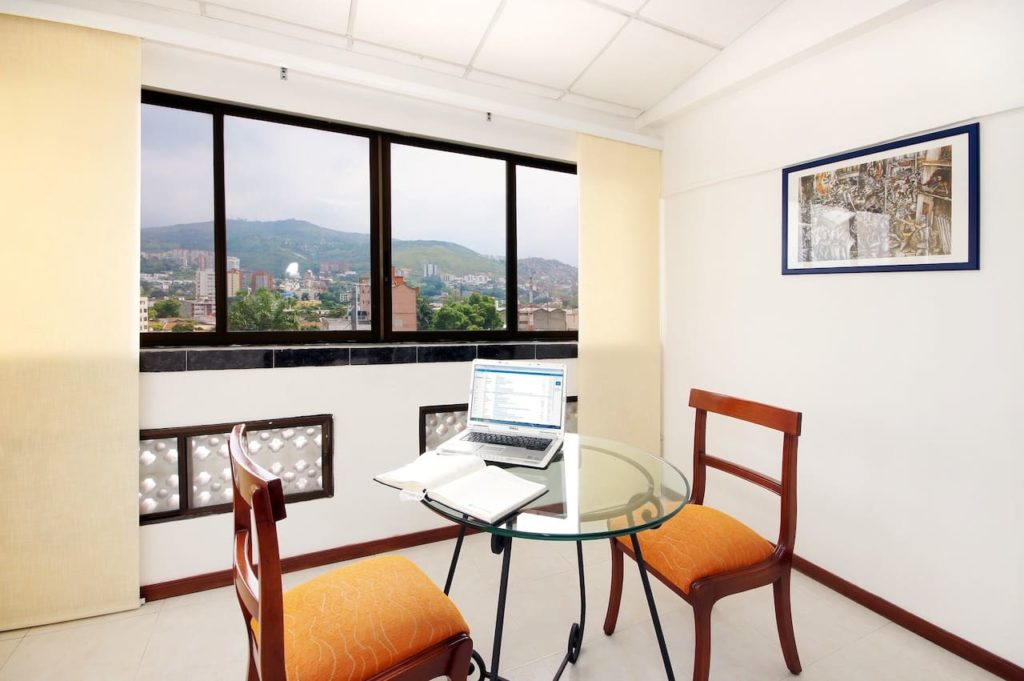

We nearly always stay in an Airbnb. If we stay for a long time, we might ask for a lower volume discount, but then when you stay for a month you usually get 10-30% off.
We pay US$5-600 a month (all in) for two-bedroom stays in Cali, Medellin, or Bogota. This price gets us everything we need — a kitchen, good wifi, several bedrooms, a washer, and all in a decent and fun part of town that isn’t too noisy.
You can pay more, and fancier places in better locations.
Areas to stay in Colombia:
- Medellin: Stay in Laureles or nearby. It’s nowhere near as congested and touristy as other areas, but still fairly cosmopolitan (you can get ramen), and there’s a giant market where you can do fresh food shopping
- Cali: You don’t have to stay right downtown, as everything is a $2 taxi away. But don’t stay too far out! Most tourists stay in San Antonia, but honestly, it’s a bit boring.
- Bogotá: La Candelaria is a little hectic but it just looks so cool. It can be rough at night time, though.
Things to watch out for in bookings:
- Noise. Colombia can be noisy. There’s often a car alarm going off, and there are street performers playing music. If your apartment’s bedroom looks onto the main road, it’ll be noisy.
- Bed comfort. Colombian beds tend to be hard. If this isn’t your cup of tea, check in with them beforehand.
- Amenities: You need to make sure your Medellin, Cartagena or Cali apartment has A/C. In Bogota, you need heating or A/C, depending on the season.
Electricity in Colombia
Wall sockets in Colombia are US-style and 110V, just like in America (or Japan). Make sure your stuff is dual-voltage if you’re not from one of those two places. It’s always one thing, like my shaver…
There are frequent power outages and they CAN last a few hours (it only happened once for us in a few months). So keep your devices charged. (In our experience, the power never went out for so long that we had to resort to a charging brick).
One caveat — when there’s a power outage, a building’s elevator will stop. One minute in a stopped elevator can seem like an eternity. Neighbours will come and rescue you when you sound the alarm, but just be prepared to freak out a bit.
Food in Colombia (including prices)
Colombian food is quite heavy. A typical meal will include a soup entrée (entrada), then the main course plate (plato principal) of rice, beans, plantain (fried), and a generous serving of protein (fish, beef, chicken etc.). That will cost you between 6,000-15,000, depending on where you get it, what you get etc.
For example, if you get chicken and get it from the local market, it’ll cost 6,000. If you get it from a fancy cafe downtown, it’ll cost you 12,000. If you get fish, it’ll always add a few more, especially for a nice fish.
Fish is cheap, fresh, and delicious in Colombia — especially in the coastal parts, like Cali! I highly recommend trying every type of fish you can find. Our favourites were bagre (catfish, commonly stewed), tilapia (often fried), and bocachico which is cheap and often in soups.
I always find it useful when people tell me what things cost in other countries, so I can make my own estimates of how much living will cost. Generally, Colombian food costs are about 1/4 of what they’d cost in the USA or Europe.
- Meal at average eatery: 7,000 -15,000 COP. E.g. a tamal is 7,000 ($2), a two-course meal with a soup entre, then a main with a big plate of meat, fried plantain, rice, and vegetable = 7,000 ($2) for chicken to 15,000 ($4) for a nice fish.
- Street arepa: 5-10,000 COP, depending on how generous the fillings and how high-quality
- Ordering in for two: About $15 (40-50,000 COP). Delivery + “rounding up” tip = 5,000 (about $1.50).
- Snacks, e.g. buñuelos, orejas, other pastries: 500-1000 (about 15-30c) each
- Chain-style food, e.g. a personal pizza (a medium); 12-18,000 ($5-6)
- 30 eggs: 10,000 ($3) — this reminded me of Africa! Similar to there, ordering a dozen gets you a weird look.
- Most fruits: 1,000-2,000 per half kilo (libra)
- A very large avocado: 2-3,000 ($0.60-$1.00)
- 2.5L of coke (huge bottle): 4,000 ($1.20)
- Meal at an evening restaurant: 20,000 COP+ per person
- Fancy dinner for a “date”: 40-50,000 COP+ per person
- Beers at a Salsa club: 5,000 ($1.50)
- Cocktails: 10-20,000 ($3-7)
There is no tipping culture in Colombia where you’re expected to pay some extra percentage. Stallholders will round up or down for you, and if someone delivers you might round up and let them keep the change, e.g. rounding up 28,000 to 30,000 and saying “keep it” (guardéselo).
Note on buying from markets: everything is per “libra”, which is 500g, or roughly the same as a US pound.
Gyms in Colombia
We like to stay fit on our longer stays. If you do too, here is some useful info.
Most “big box” gyms heavily prefer recurring monthly payments or multi-month commitments. I never found a weekly pass.
Some chains (e.g. Fitness24Seven) don’t even have an option for foreigners to pay for a month. The minimum is three months.
If you poke around, you can find a gym with a cash monthly price. If you do, a one-month gym membership costs between 80-100,000 + sign-up fee 0-20,000, which they might waive. Total about US$30-40.
Gyms that do classes, like Crossfit gyms (and they do exist!) are cooler and more flexible. (I had sprained my ankle a few weeks prior to arriving, so no Crossfit for a while.)
When to go to Colombia: avoid wet seasons!
Colombia is generally never extremely cold (like below freezing), but Bogota gets chilly during winter, when the general range is 10-20 degrees Celsius.
Even in the middle of winter, you just need a light sweater in Bogota.
Cali, Cartagena and Medellin are much warmer, basically tropical. In their “winter” (dry season, really), we spent every day in shorts/t-shirt, and I dreaded putting on trousers to go out dancing. (You can dance in shorts, but it lacks class a little).
Safety in Colombia
A lot of people hear of violence in Colombia by drug traffickers and the FARC revolutionaries.
Most of this doesn’t apply to developed parts of the city. Safety advice in Medellin, Cali, and Bogota is the same as for any big city: avoid going out at night alone to sketchy parts of town, and avoid the sketchiest parts of town altogether unless you have a good reason. If going out at night, take a taxi or Didi.
People get mugged and randomly murdered, but no more/less than in any city in the US (a pretty low standard, admittedly).

